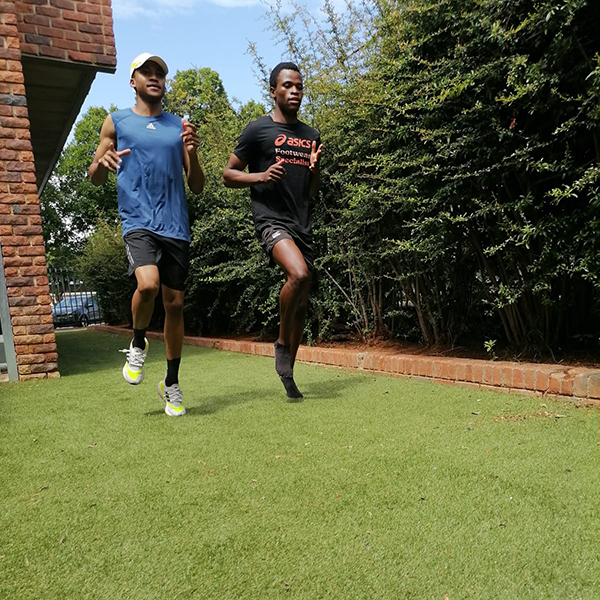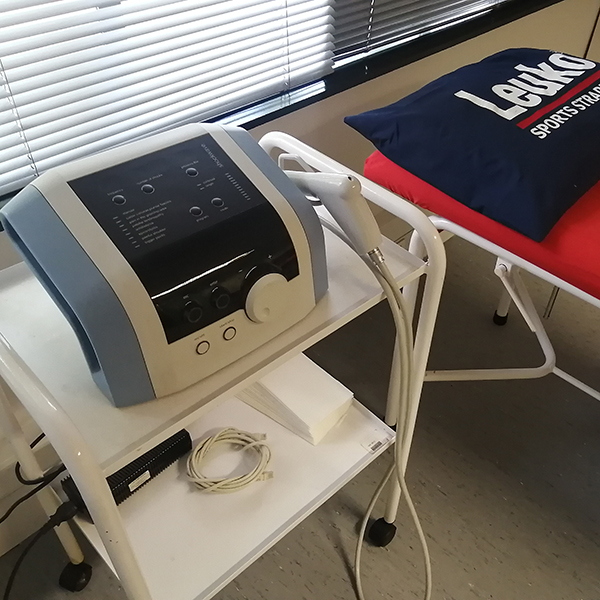A facility where University of the Free State (UFS) athletes are provided a top integrated medical service, where theory and practice meet, and where the expertise of quality professionals is highlighted.
According to Prof Francis Petersen, Rector and Vice-Chancellor of the UFS, the newly renovated facilities and services of the Sports and Exercise Medicine Clinic in Kovsie Health are an example of this.
“For me, this is something we can talk about. Not only inside the university or within Bloemfontein and the larger Free State area, but also in the rest of South Africa.”
Prof Petersen and stakeholders of the clinic attended the launch of the revamped facilities on the UFS Bloemfontein Campus on 24 January 2023.
Patients now receive medical treatment in a new-look environment after renovations were completed at the end of 2022. The clinic’s patients include KovsieSport high-performance athletes, UFS staff and students, and private patients.
Renovations were done to, among others, consultation rooms, offices, passages, and the rehabilitation centre, which was improved and expanded with artificial grass.
And there are more developments in the pipeline at Kovsie Health.
Service to sports stars
Edith Maritz, physiotherapist in Kovsie Health, believes the renovations provide patients with even better service.
“Our vision for the sports clinic is to be a leading patient-centred, evidence-based sports medicine clinic among South African universities.
“I firmly believe that this is the start of bigger and better things to come.”
The clinic provides services to UFS high-performance athletes and therefore has a close relationship with KovsieSport.
Jerry Laka, Director of KovsieSport, says it plays an important role in the high-performance programme.
It provides an integrated medicine and science programme, helping sports stars to perform on the field, and to be rehabilitated quicker.
“I believe that with this kind of service and investment, our student athletes will get first-hand, quality, top-notch rehabilitation programmes that will help them in terms of performance.”
Theory meets practice
Final-year UFS Physiotherapy students receive practical training at the clinic, and Maritz believes the new facilities add value to their experience.
“The facility allows our Academic Project to be integrated in terms of what the UFS offers,” says Prof Petersen.
“This is where theory and practice meet. When the theoretical and practical sides meet, there are benefits for both.”
According to him, the quality of the UFS personnel is also emphasised.
“These are people who have the competency, are dedicated and committed, and can – in their integrated way – provide a service that is highly professional.”
Dr Gerhard Jansen, medical practitioner in Kovsie Health, thanked the UFS.
“We are very happy with the renovations and with the support we get from the university to improve our working environment.
“The renovations make it more suitable to reach our goals as a clinic.”
 | Kovsie athletes such as Tsebo Matsoso (left) and Siphephelo Ndlovu are now using the renovated facilities, which include synthetic grass, for rehabilitation. Photo: Supplied |
|
|
 | The Sports and Exercise Medicine Clinic at Kovsie Health also have shockwave therapy facilities, which can be used for problems such as tendon issues and non-healing fractures. Photo: Jóhann Thormählen |